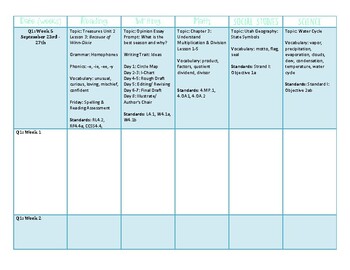

Move him up to a level that will challenge and interest him! Using a scope and sequence in lesson planning Have a 6-year-old who is an excellent reader? Don’t make him suffer through 1st grade readers.
#Scope and sequence meaning free
If you are using a curriculum with graded textbooks, you are free to meet your child’s needs by using a 4th grade book in a specific subject and a 9th grade book in another subject-even though This flexibility applies to grade levels as well. On the other hand, if your daughter is a whiz at math and she demonstrates that she knows the current material, why should she have to do 100 problems that she already understands? Let her move on! This is one of the beauties of homeschooling-you can tailor the curriculum to fit the child. If he tires easily, you might work some of the problems orally You can assign half or a third of the problems to him. What does this look like in real life?įor example, if you have a child who is not mathematically inclined, you don’t need to insist that he does 100 math problems a day. Whenever your child is ready to move on to a new concept or needs more time to demonstrate understanding, you’re free to adjust the pacing of the scope and Home education, as an individualized educational plan, also allows for appropriate pacing. Keep in mind that your curricula, materials, and the scope and sequence are tools-they should neither restrict nor control our teaching-you That being said, utilizing a scope and sequence can be a very handy tool for laying out yearly teaching plans.

To teach each of your children as a unique individual rather than be hemmed in by a predetermined set of “common” standards and timelines. One of the many benefits of home education is that you, as a parent-teachers, have freedom and flexibility

Home education allows you to follow your child’s needs, interests, developmental stage, and readiness when planning instruction for them.


 0 kommentar(er)
0 kommentar(er)
